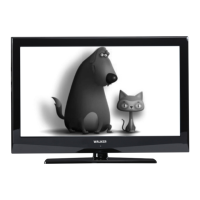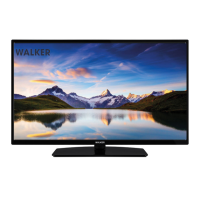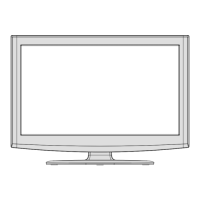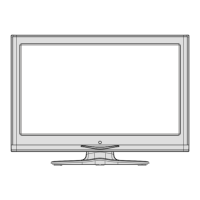Do you have a question about the Walker WP32ELED and is the answer not in the manual?
| Display Technology | LED |
|---|---|
| Screen Size | 32 inches |
| Resolution | 1366 x 768 |
| Aspect Ratio | 16:9 |
| HDMI Ports | 2 |
| USB Ports | 1 |
| Built-in Speakers | Yes |
Details on operating voltage and AC outlet requirements for the TV set.
Instructions on handling and placement of the power cord to prevent damage or hazards.
Advises against using the TV in humid places or exposing it to liquids to prevent damage.
Provides instructions on how to clean the TV set using a soft, dry cloth.
Explains the importance of ventilation openings for reliable operation and preventing overheating.
Warns against placing the TV near open flames or heat sources like electric heaters.
Recommends disconnecting the power cord during storms or when away.
Advises using manufacturer-specified replacement parts for safety and performance.
Connects devices with HDMI output for high-definition video and audio signals.
Connects the aerial antenna system to the TV for receiving broadcast signals.
Connects external devices like decoders or VCRs via SCART cable.
Used for inserting a CI card to access subscription channels.
Allows connection of USB devices for playback and programme recording.
Connects external devices for video and audio signals using the supplied AV cable.
Connects external headphones to listen to TV audio.
Controls volume, programme selection, source input, and standby mode on the TV.
Details on connecting USB drives for playback and recording features.
Instructions on how to record programmes using a USB disk.
Connects optional equipment like camcorders or cameras using side AV connectors.
Instructions for inserting batteries into the remote control handset.
Explains how to use the physical buttons on the TV for volume and programme selection.
How to adjust the TV's volume using the remote control buttons.
How to change channels using the remote's program up/down buttons.
Method to select channels directly using the numeric buttons on the remote.
Instructions on how to initiate programme recording directly from the EPG.
Accesses options for managing EPG events, such as setting timers or viewing details.
Steps for manually searching for analogue TV channels.
Adjusting the fine tune for analogue channels for optimal reception.
How to edit, move, delete, rename, or lock channels in the list.
Procedure to change the position of a channel within the channel list.
Steps to remove unwanted channels from the channel list.
Allows changing the name of a stored channel.
Enables parental control to restrict access to specific channels.
Explains the functions of coloured buttons for managing favourite channels.
How to play video files stored on a USB device using the media browser.
How to view image files stored on a USB device using the media browser.
Adjusting picture settings specifically for PC input sources.
Instructions for inserting and using a Conditional Access Module (CAM) for digital channels.
Accesses menu settings that may vary by service provider for conditional access.
Customizing language settings for menus, audio, subtitles, and teletext.
Enables or disables menu protection and sets a PIN code for access control.
Sets timers for programmes and adjusts TV power settings.
Sets the TV to automatically turn off after a specified duration.
Shows programme number, name, sound indicator, teletext, and resolution.
Temporarily disables sound output from the TV.
Allows changing picture settings like Dynamic, Natural, Cinema, or Game.
Enables or disables subtitle display on the screen.
Guidance on cleaning the TV screen safely and without damage.
Notes on ghosting and how to mitigate it by turning off the TV.
Troubleshooting steps for when the TV has no power.
Advice on improving picture quality, including aerial checks and retuning.
Troubleshooting steps for when there is no picture displayed.
Troubleshooting steps for when there is no sound or sound from only one speaker.











